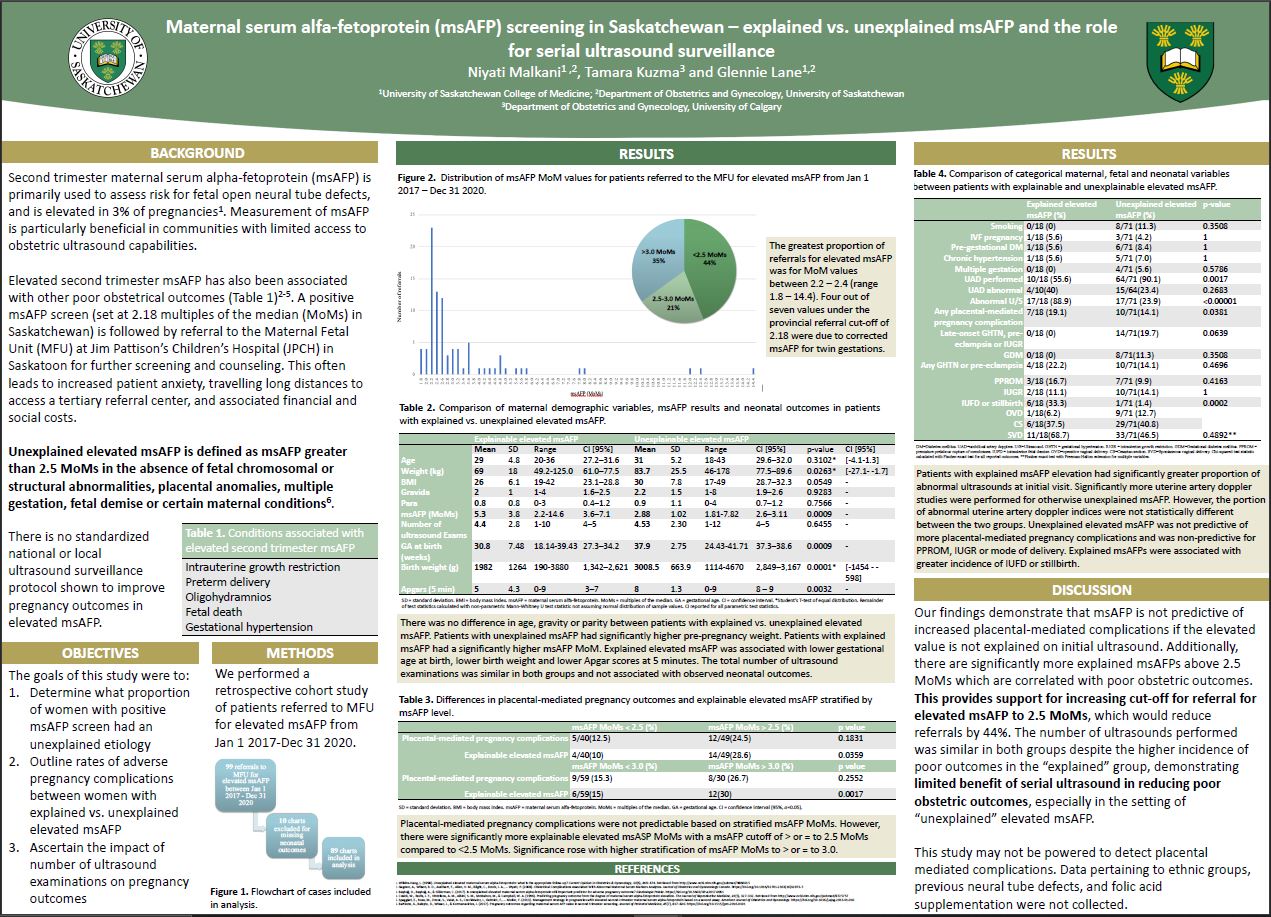
A2.4: Maternal serum alfa-fetoprotein (msAFP) screening in Saskatchewan – explained vs. unexplained msAFP and the role for serial ultrasound surveillance
Niyati Malkani, Tamara Kuzma, Glennie Lane
Across Canada, first and second trimester serum analytes are commonly used in conjunction with maternal characteristics to provide risk assessment for specific aneuploidies. Second trimester maternal serum alpha-fetoprotein (msAFP) is used to assess risk for fetal open neural tube defects, and is elevated in 3% of pregnancies. Elevated msAFP levels can also be associated with other adverse obstetrical outcomes. Unexplained elevated msAFP is defined as msAFP greater than 2.5 multiples of the median (MoMs) in the absence of fetal chromosomal or structural abnormalities, placental anomalies, multiple gestation, fetal demise or certain maternal conditions. However, cut-off values for a positive screen are provincially determined, and have been set at 2.18 MoMs in Saskatchewan. A positive screen leads to referral to the Maternal Fetal Unit at Jim Pattison’s Children’s Hospital in Saskatoon for further screening and counseling. This often incurs increased financial and social costs secondary to travelling long distances to access a tertiary referral center. We conducted a retrospective cohort study to investigate differences in patient outcomes between unexplained and explained elevated msAFP. Compared with unexplained elevated msAFP, explained elevated msAFP ([87.5% vs. 18.9%, p<0.001]) was associated with higher level of msAFP 5.6 [1.88-14.57] vs. 2.9 [1.81-7.82], p=0.014), lower GA at birth (30.2 vs. 38.2, p<0.0001), lower birthweight (1876g vs 3086g, p<0.0001), lower 5-minute Apgar scores (5 vs 9, p<0.001), and increased placental-mediated pregnancy complications (11.1% vs 5.40%, p=0.033). There was no significant difference in the number of ultrasound examinations between the two groups (5 [2-10] vs. 4 [2-12], p=0.3). Our data support reducing serial ultrasound examinations for unexplained elevated msAFP and increasing the msAFP threshold for tertiary center referral. The results of this study will help define instructional protocols to ultimately optimize resource allocation and guide patient management.
